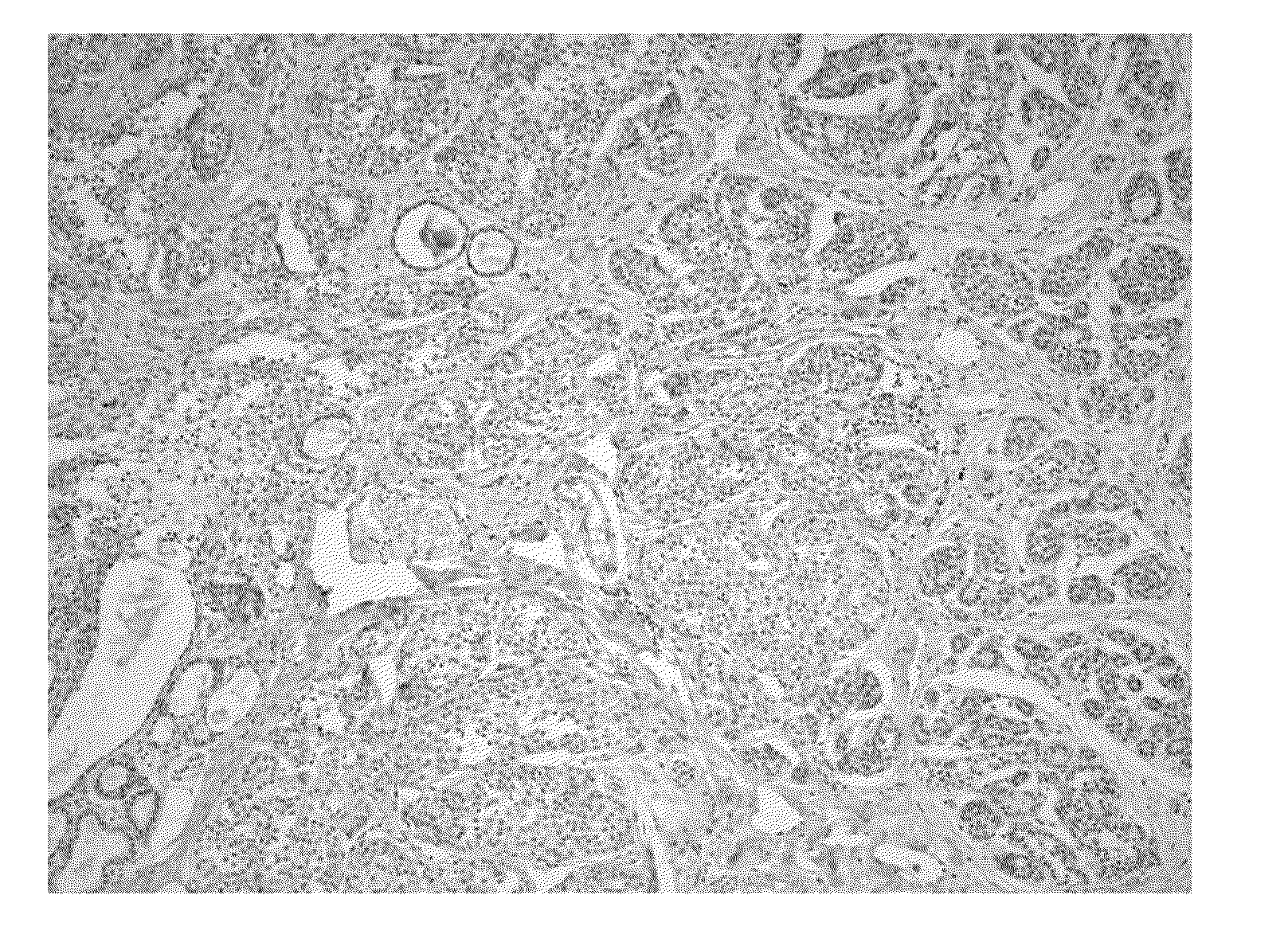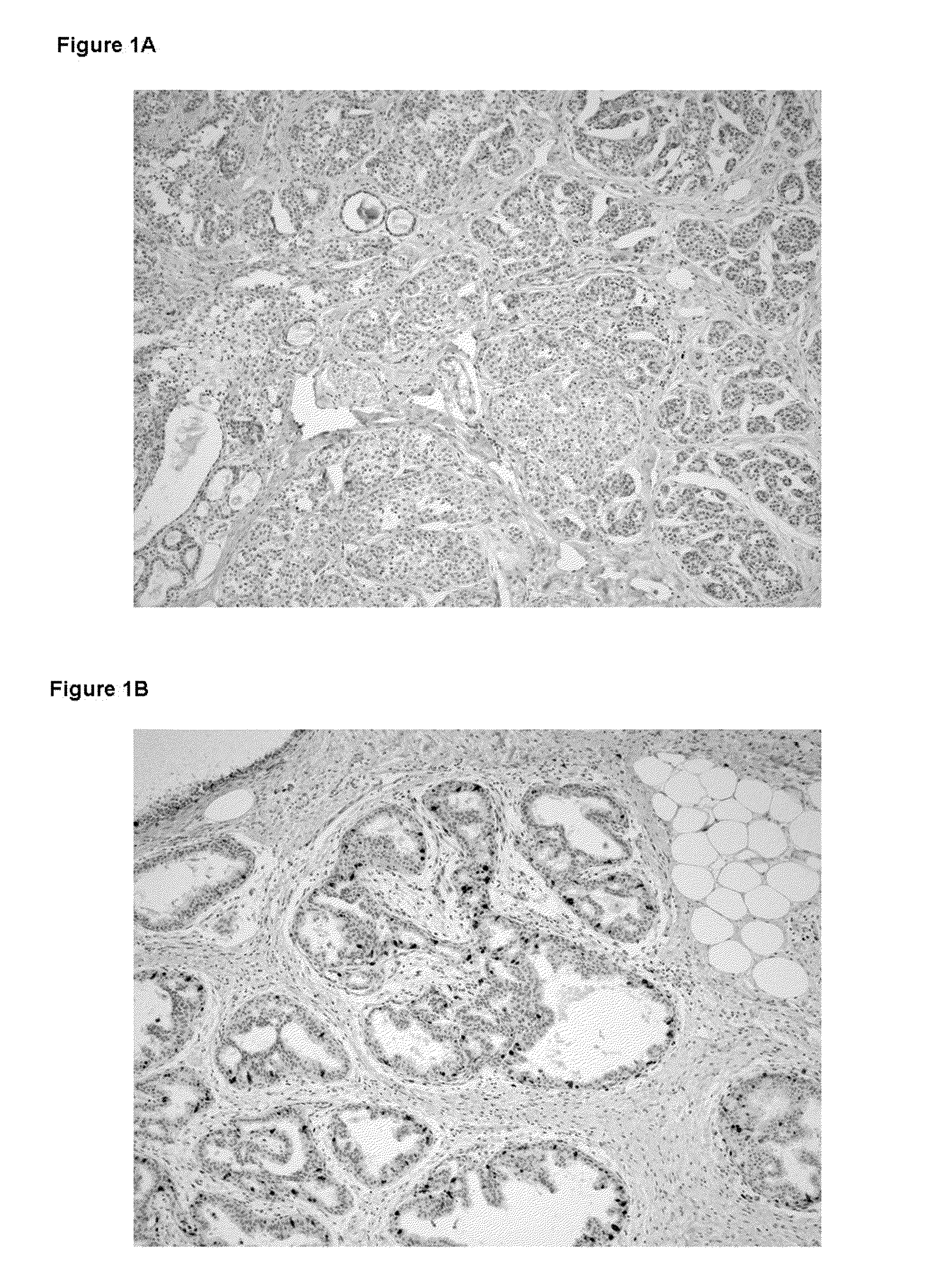Assessing atypical hyperplasia patients for the risk of developing breast cancer
a technology for atypical hyperplasia and breast cancer, which is applied in the direction of microbiological testing/measurement, biochemistry apparatus and processes, etc., can solve the problems of insufficient accuracy in predicting the risk of individual women with atypia, and achieve the effects of increasing the risk, increasing the risk, and increasing the risk of breast cancer
- Summary
- Abstract
- Description
- Claims
- Application Information
AI Technical Summary
Benefits of technology
Problems solved by technology
Method used
Image
Examples
example 1
The Expression Level of Ki67 Polypeptides is a Time-Varying Biomarker of Risk of Breast Cancer In Atypical Hyperplasia
Study Population
[0028]The Mayo Benign Breast Disease cohort includes 9376 women ages 18-85 who had excisional breast biopsies with benign findings at the Mayo Clinic in Rochester, Minn. between Jan. 1, 1967 and Dec. 31, 1991. In this cohort, 331 women had atypical hyperplasia. Benign biopsies were reviewed by a study pathologists using current classification systems (Dupont and Page, N. Engl. J. Med., 312(3):146-51 (1985) and Page et al., Cancer, 55(11):2698-708 (1985)). Paraffin-embedded, formalin-fixed tissue for Ki67 staining was available for 192 of the women with atypia.
Follow-Up and Risk Factor Data
[0029]Follow-up for breast cancer events and risk factor information were obtained through Mayo medical records and a study questionnaire. Family history was classified as negative, strong, or weak. Criteria for a strong family history were: at least one first-degree...
PUM
| Property | Measurement | Unit |
|---|---|---|
| time | aaaaa | aaaaa |
| nucleic acid detection method | aaaaa | aaaaa |
| nucleic acid- | aaaaa | aaaaa |
Abstract
Description
Claims
Application Information
 Login to View More
Login to View More - R&D
- Intellectual Property
- Life Sciences
- Materials
- Tech Scout
- Unparalleled Data Quality
- Higher Quality Content
- 60% Fewer Hallucinations
Browse by: Latest US Patents, China's latest patents, Technical Efficacy Thesaurus, Application Domain, Technology Topic, Popular Technical Reports.
© 2025 PatSnap. All rights reserved.Legal|Privacy policy|Modern Slavery Act Transparency Statement|Sitemap|About US| Contact US: help@patsnap.com



